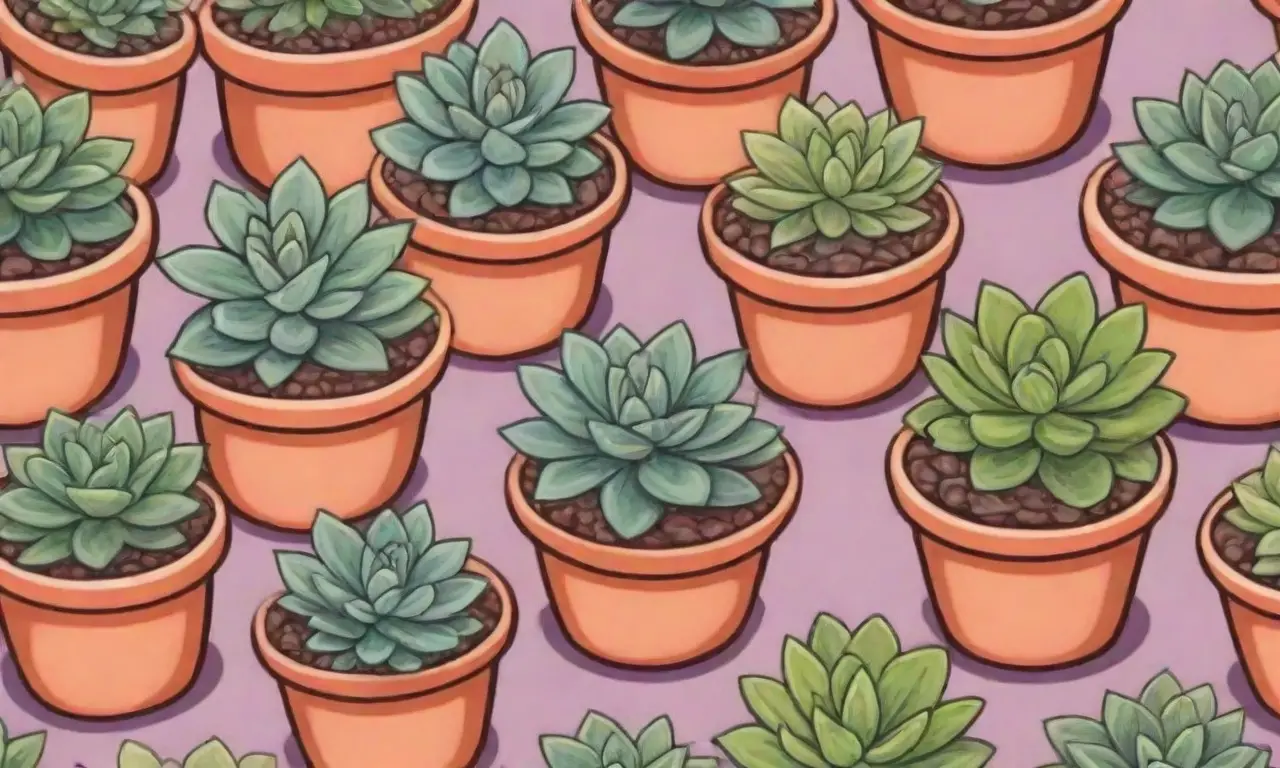
Best Pruning Schedules to Follow for Your Succulent Collection

Introduction
Succulents, noted for their stunning shapes, vibrant colors, and unique textures, have surged in popularity amongst plant enthusiasts. They've earned their place as a beloved choice not just for their aesthetic appeal but also for their relatively low maintenance requirements. However, as with any plant, ensuring succulents thrive requires understanding their needs, especially when it comes to pruning. Proper pruning enhances their natural beauty, promotes healthy growth, and prevents wicked diseases that can occur if a plant is neglected.
This article delves into the various aspects of pruning succulents, including the best schedules to follow throughout the year. We will provide actionable insights that cater to both newbies and seasoned succulent lovers, ensuring that you enrich your collection while keeping your plants healthy and thriving.
Understanding the Importance of Pruning Succulents
Pruning is often seen as a daunting task, but it serves as a critical part of succulent care. Unlike other leafy plants, succulents store water in their leaves, stems, and roots, making them somewhat unique in their maintenance needs. One of the primary reasons for pruning succulents is to remove dead or damaged leaves that can attract pests and diseases. By removing these compromised parts, you improve air circulation and light exposure within the plant, fostering a healthier environment.
Furthermore, pruning helps in shaping your succulents. Many succulent plants tend to grow leggy, meaning that they may become elongated with a sparse appearance due to improper light conditions. Regular pruning can help maintain their compact form and encourage branching. Not to mention, bushier plants are often more visually appealing and can create a fuller look in your succulent arrangements.
Another key benefit of pruning is to stimulate new growth. Succulents, although slow-growing, appreciate a bit of encouragement. When you prune them, it often leads to new growth in the form of leaves or offsets, which is particularly beneficial for those wanting to propagate their plants. Thus, pruning not only maintains the overall health and appearance of your plants but also promotes lush growth and can expand your thriving succulent collection.
Seasonal Pruning Guidelines
When it comes to crafting a pruning schedule for succulents, understanding their seasonal growth patterns is vital. Succulents typically grow during the warm months—spring and summer—when they thrive under optimal sunlight and warmth. The best time to prune is just before or during this active growth period. This allows your plants to recover quickly from pruning and makes them more inclined to produce new growth.
During spring, right before the growing season kicks off, check for any dead or shriveled leaves. This is the perfect time to clean up your succulents and remove any negative elements. In addition, remove any offsets that may have developed since the last pruning. Be cautious to use clean, sharp pruning shears to prevent damage and reduce the risk of disease. Proper spring care prepares your plants for a robust growing cycle, ensuring that they are healthy and full of life as they enter their most active period.
 A Beginner's Journey into Succulent Pruning Techniques
A Beginner's Journey into Succulent Pruning TechniquesAs summer progresses, keep an eye out for any leggy growth that may have occurred during the early months. If you notice stems growing too long or the plant becoming unruly, summer can be another optimal time for pruning. This will not only reshape the plant but also prevent unnecessary energy expenditure that can affect its overall health as it prepares for the next transition into dormancy. The best practice here is to tip-prune any wandering stems; this method prompts a more compact bush-like shape.
Moving into fall, the growth rate typically slows down for most succulent species, so this period can be utilized for final touches. If you didn’t prune enough during summer, now is the time to take action. Remove any dried leaves, spent flowers, and unwanted growth to prepare your succulents for the cooler months ahead. It’s important to note, however, that pruning in the fall should be limited, as most succulents will begin to enter a period of dormancy where they require less stress.
The Actual Pruning Process

Understanding the actual process of pruning is just as crucial as knowing when to do it. Start by gathering the necessary tools: a pair of clean, sharp scissors or pruning shears, a small potting mix, and possibly a small spray bottle with water to mist your succulents post-pruning. Clean your tools with rubbing alcohol to ensure that there won't be any contamination when making your cuts. This practice is paramount in avoiding the spread of disease among your plants.
Begin by examining your succulents closely. Look for dead or yellow leaves that have turned brown, as well as any mushy spots that indicate rot. Carefully remove these leaves by pinching or cutting right at the base, ensuring that you do not disturb healthy portions of the plant. When dealing with leggy stems, focus on cutting back to a healthy section of leaf where new growth can emerge. For healthier plants, always prune above a node or leaf.
If your succulent is large and dense, providing ample airflow through its leaves is essential. Gently pull apart clustered sections to see if any stems can be cut without compromising the plant’s overall integrity. When you have pruned appropriately, it may be beneficial to allow the cut areas to callous over for a few hours before returning the plant to its original conditions. This intervention can prevent rot and disease.
Lastly, once you’ve pruned and trimmed your succulents, don’t forget to check their surrounding environment. Ensure they have adequate sunlight and are not exposed to overly humid conditions, which can lead to further issues. Keep your pruned succulents in a well-ventilated area and until they begin to show new growth, avoid excessive watering to allow them to recover.
 Pruning and Watering: Techniques for a Successful Succulent Care
Pruning and Watering: Techniques for a Successful Succulent CareTips for Pruning Different Types of Succulents
Different types of succulents may require tailored pruning techniques based on their inherent growing habits. For example, rosette-forming succulents, like Echeveria and Sempervivum, benefit greatly from a style of pruning that focuses on the outer leaves. As you prune these plants, be careful to retain the integrity of the rosette to avoid disturbing the central leaves, which are crucial for the plant's health. This type of pruning allows the plant to maintain its characteristic structure while encouraging growth at the edges.
For succulents that exhibit trailing or vine-like characteristics, such as String of Hearts or Burro's Tail, a different approach can enhance their cascading aesthetic. Regularly trimming the tips and side stems will encourage bushier growth but also prevent them from becoming heavily leggy. Not only will this maintain their visual appeal, but it also encourages stronger growth patterns that will promote more offsets budding from the parent plant.
In contrast, for cactus-like succulents, such as the Haworthia and Aloe, care must be taken to avoid damage to their spines during the pruning process. Use thicker gloves and work cautiously, focusing on trimming dead or overgrown leaves while steering clear of new growth points. Remember to sterilize your tools between cuts, as cacti can be particularly susceptible to infections after pruning.
The key takeaway here is to always pay attention to the specific needs and growth patterns of each succulent. Research those particular types in your collection to develop a tailored pruning approach that will ultimately enhance their health and aesthetic.
Conclusion
Building a succulent collection is not just about acquiring diverse plants; it’s about understanding their care and cultivating a thriving environment for them to flourish. Pruning is a significant component in this journey, charting the path for healthier and more attractive plants. By adhering to seasonal guidelines, following proper pruning processes, and customizing techniques for various succulent types, you establish a solid foundation for nurturing your green companions.
Embracing a pruning schedule will allow you to readily identify changes in your plants and adapt your care routine. You’ll soon see how regular maintenance improves their vitality, enhances their aesthetics, and even enables propagation opportunities. Remember that each cut and snip is not merely a chore but rather an opportunity to foster a thriving ecosystem right within your home.
As you step into this garden of succulents armed with knowledge and confidence, never underestimate the power of patience and consistency. Soon, you’ll not only become adept at pruning but will also find enjoyment in watching your vibrant succulent collection flourish, bringing joy and beauty into your everyday life. The journey of succulent care is filled with learning and discovery, so prune away and let your plants shine!
 Pruning Techniques That Promote Blossoming in Succulents
Pruning Techniques That Promote Blossoming in SucculentsIf you want to read more articles similar to Best Pruning Schedules to Follow for Your Succulent Collection, you can visit the Pruning tips category.


You Must Read